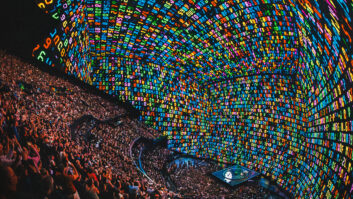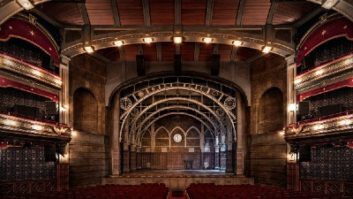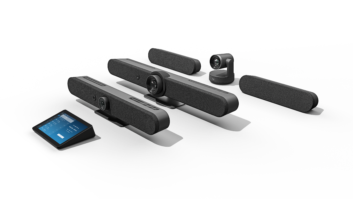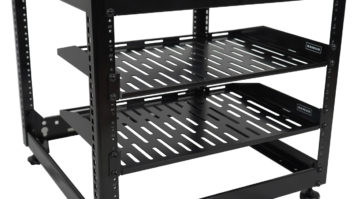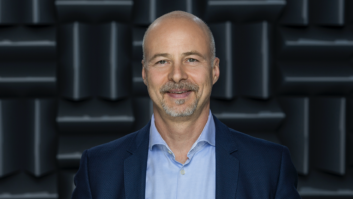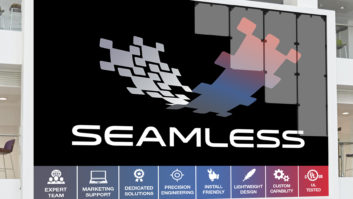Extreme audio levels can potentially damage hearing, and the issue is among the most serious health concerns in the world right now. Younger age groups in particular are reported to be experiencing problems with their hearing due to long periods of exposure to high levels of sound, both on personal music players (PMP) and at concerts.
As a result, over the last six years the World Health Organisation (WHO) has issued a series of standards and guidelines on sound and noise levels to limit the extent of this potential damage. The first of these, Environmental Noise Guidelines for the European Region (2018), covered a lot of ground, including traffic, railways, aircraft, nightclubs, pubs, fitness centres, live sport, concerts or live music venues and PMP use.
Being lumped in with non-musical sound prompted Live DMA, a network of European live music associations, to issue in 2019 a white paper entitled ‘Music is Not Noise’. Live DMA was later invited to take part in consultations for what eventually became the Global Standard for Safe Listening – Venues and Events (2022). Live DMA aimed to “defend all music aesthetics and diversity” and give more flexibility for maximum sound levels in small venues, plus removing peak sound limiters from live music events.
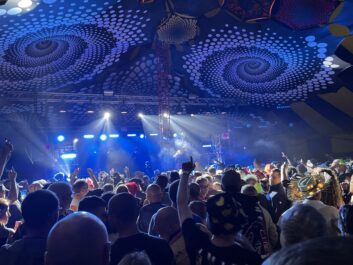 Individual countries also have their own legislation and guidelines on sound and noise. In the UK this includes the Noise Council Code of Practice (1995), which covers music concerts and was based on the old Greater London Council ‘Pop Code’ of 1976, together with the 1990 Environmental Protection Act and 2003 Licensing Act.
Individual countries also have their own legislation and guidelines on sound and noise. In the UK this includes the Noise Council Code of Practice (1995), which covers music concerts and was based on the old Greater London Council ‘Pop Code’ of 1976, together with the 1990 Environmental Protection Act and 2003 Licensing Act.
“The most likely formal control in the UK is a specific noise condition on the premises licence,” observes Richard Vivian, acoustic consultant and director of Big Sky Acoustics. “The primary statutory instrument that addresses employee safety is the 2005 Control of Noise at Work Regulations. However, the first threshold level of 80dB is often viewed as problematic in hospitality environments where music levels will typically be in the mid-nineties dB. A responsible approach to venue design, sound system configuration, employee work patterns and the right hearing protection can make this work but it requires skill and experience.”
LIMITED SIGNALS
Another catchall method of keeping sound levels to a set dB figure is to install a limiter, which will clip the signal when the maximum is reached or, in extreme cases, cut the power completely. Sound consultant Simon Honywill describes this method of control as “archaic”, with the cut-off in some civic halls set at 90dB. “It comes from a fundamental lack of understanding of the nature of what is going on,” he says. “The majority of problems are caused by low frequencies and very specifically third octave bandwidths. You’ll find 63Hz, 40Hz are problematic and in festival systems, for example, that is where all the weight of the kick drum usually is. That’s what upsets people but there are ways of managing it using various filters without actually killing the mix.”
An alternative to old-style devices that limited signal level rather than peak is to use the DSP either within loudspeaker management systems or in the front-end of amplifiers as a dynamics processor to introduce a maximum level control. Emma Bigg, director of AV design consultancy Octavius RE, comments that clubs featuring DJs are often told by local councils to install a limiter. “So you get a brick wall limiter and someone is turning up the volume, it’s starting to distort and feels quieter,” she says. “When what they need to do is turn it down to stop everything hitting the limiter, so the system can breathe and you get a better result.”
 Octavius RE works on a variety of audio installations, including for the hospitality and fitness sectors. In the case of restaurants, Bigg has seen either low powered systems or a rig more suited to a rock gig being used, which causes level problems in itself. “If you come from a venue background and you go for a left-right-sub configuration and try to put that in a restaurant, it doesn’t really work,” she says. “One end is really loud because you’ve got to turn it up to get coverage at the other end. Whereas a good quality, distributed sound system that’s properly set up with the right power, amplification and placement is going to sound louder because you can hear it better.”
Octavius RE works on a variety of audio installations, including for the hospitality and fitness sectors. In the case of restaurants, Bigg has seen either low powered systems or a rig more suited to a rock gig being used, which causes level problems in itself. “If you come from a venue background and you go for a left-right-sub configuration and try to put that in a restaurant, it doesn’t really work,” she says. “One end is really loud because you’ve got to turn it up to get coverage at the other end. Whereas a good quality, distributed sound system that’s properly set up with the right power, amplification and placement is going to sound louder because you can hear it better.”
SOUND SPILLS
Today, more distributed and positional systems are being employed to prevent sound from spilling out of a venue into surrounding areas. This technique was used at Lord’s Cricket Ground, which sits in a residential area of north London. RG Jones installed the loudspeaker system with design and project management services by RH Consulting.
Principal consultant Roland Hemming explains that because of the close proximity of Lord’s to local residences, great care had to be taken in the planning stage: “We used directional loudspeakers in a highly distributed design to put out as little energy in any single place, with a zoned approach so appropriate audio is only delivered where it is needed. In addition, there are limiters on the entire system so it cannot be over-driven. This can be done within the Q-SYS DSP but some of the amplifiers also have DSP built-in.”
RG Jones’ sales and installations director, Jon Berry, comments that in designing a system the company aims to “control sound levels to each specific area”. Another example of this is the West Holts stage at Glastonbury, which last year featured a Martin Audio Wavefront Precision rig to provide additional containment so that as little sound as possible leaked towards neighbouring stages. Berry adds that DSP-based dynamics, EQ and timing are used for every loudspeaker circuit, either built into amps or other external devices.
Gareth Davies, projects lead at specialist loudspeaker manufacturer HOLOPLOT, observes that venue installers could learn lessons from the PA/VA (public address/voice alarm) sector, which for many years has based installations on distributed systems.
“Historically, sound designers and front-of-house engineers have designed rigs under the distinct misconception that louder is always better,” he says.
“In turn, audiences often assume that if they can’t understand the lyrics, it must be because the system isn’t loud enough and not due to a lack of intelligibility. PA/VA designers understand that intelligibility is not only a function of level but a result of both the direct to reverberant ratio and the signal level relative to the background noise. In most cases PA/VA systems are distributed systems operating at lower levels, typically 80-90dB.”
 While the actual level of sound is a prime factor in causing hearing damage, the length of time someone is subjected to high levels is equally significant. Thomas Lund, senior technologist at Genelec, works for the WHO in an unpaid capacity and is well aware of the potential risks for concert goers and clubbers, but points out this is equally true for customers and staff in shops and restaurants.
While the actual level of sound is a prime factor in causing hearing damage, the length of time someone is subjected to high levels is equally significant. Thomas Lund, senior technologist at Genelec, works for the WHO in an unpaid capacity and is well aware of the potential risks for concert goers and clubbers, but points out this is equally true for customers and staff in shops and restaurants.
“You can have a very lively restaurant with background music at a pretty high level of 80dB,” he says. “If you are seated for two hours while eating and more or less shouting at each other, this could put you in the danger zone, and in clothing stores it can be very loud. I measured shops like that in the US ten years ago and levels were in the 90s dB SPL. As a customer, if you go in and out for ten minutes it’s fine but if you’re working there, it would be highly illegal in European countries.”
Lund has also worked with the WHO on PMP safety. This has resulted in a CENELEC (European Electrotechnical Standardisation Committee) standard that will see all such devices in Europe, including the UK, have to feature mandated sound exposure measurement technology.
“There will be a grace period to be determined but it will probably be two or three years from now,” he says. “At that time all devices sold in our area must be compliant. That would be an improvement in making people realise the levels at which they should be listening and take note when going to concerts. I think a lot will come out of it.”
WORKPLACE PROTECTION
Professional headphones and headsets have been designed to hearing safety standards for some time, which has provided greater protection not only for those working in live sound and broadcasting but also office workers, particularly those in call centres. Sennheiser follows EU safety in the workplace directives on headphone levels, and developed ActiveGard to keep output below a prescribed level. This features on its professional models, including the HMD 300 PRO headset.
Jabra has also produced a series of technologies to help protect the hearing of those using headsets for long periods of time. These are branded as SafeTone, which comprises PeakStop, designed to remove sudden noises, and IntelliTone to keep down the average noise level. As with many other headphone/headset manufacturers, Jabra additionally offers noise cancelling, which, while not a sound control feature in itself, does exclude background noises and so means a wearer does not need to have the volume too high to hear what they are listening to.
“Noise cancellation is not really to do with protecting your hearing,” explains product manager Richard Trestain. “It gets rid of rumbles and repetitive noises, including air conditioning and machinery. A feature like IntelliTone is designed to protect people’s hearing. It’s about average noise level during the day to ensure that call centre workers are not exposed to continuous high levels of sound.” Trestain adds that PeakStop, originally designed to prevent spikes on conventional phone calls, now has applications in video conferencing dealing with unexpected interference, which causes similar unwanted peaks on communications platforms such as Teams and Zoom.
Attitudes towards volume levels have changed dramatically over the last 40 years. Going to a gig and coming out with ringing in ones ears is, fortunately, no longer a badge of honour – and there’s a growing awareness of the dangers of prolonged, loud, headphone use, even in the workplace. People are being guided to be more careful with their hearing, and the technologies and standards to help them do that are now numerous.
